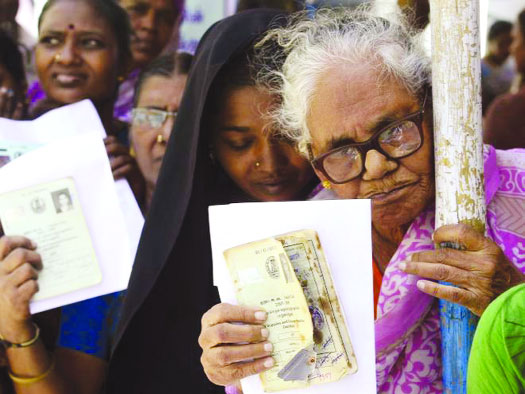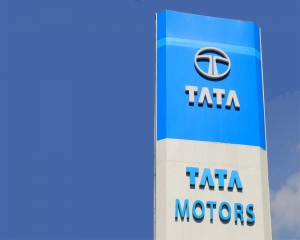2017 can largely be summed up as the year of policies and regulation for the health sector. Next year, the Government must kick-start the ‘decade of implementation and actions’
The year 2017 started with a high note of 27 per cent increase in financial allocation for the health sector in the Union Budget 2017-18. During the year, the Union Cabinet approved the National Health Policy (NHP). The National Medical Commission Bill aims to repeal the Medical Council of India Act of 1956, once it is passed in Parliament. Meanwhile, the Parliament also passed the Mental Healthcare Act, 2017, and the HIV and AIDS (Prevention and Control) Act. Prices of cardiac stents and orthopedic implants were capped through regulations and the authorities advised doctors to write generic names of drugs on prescriptions. The three-year draft action agenda was released by the Niti Aayog, India’s first ever State-level disease burden data was released and the National Nutrition Mission was announced.
The second half of the year was dominated by reports of poor quality of health services, both in the Government and private sector. More than 200 children died in a Government medical college in Gorakhpur and in few other Government district hospitals in different parts of the country. A private hospital in Delhi erroneously declared a live baby dead and a few hospitals were alleged to have over charged the patients.
In the missed opportunities, the year passed by, waiting for the launch of the National Health Protection Scheme, which was announced in the Union Budget 2016-17. The ambitious announcement to transform 150,000 health sub-centres into Health and Wellness Centres (HWCs) had an unimaginative and unaspiring target of converting 4,000 of 150,000 (or three per cent of the total) sub-centres into HWC during the year.
Necessary moves but not sufficient: The release of various policies and the enactment of legislations was the highlight of the year. The NHP 2017 has the goal of “universal access to good quality health care services without anyone having to face financial hardship as a consequence”, which is commendable and is well-aligned with the global discourse on Universal Health Coverage (UHC).
However, 15 years ago, the national health policy of 2002 had proposed a few targets, including the following: (a) increase utilisation of public health facilities from <20 per cent to 75 per cent by 2010; (b) increase health expenditure by the Government as a percentage of Gross Domestic product (GDP) from 0.9 per cent to 2.0 per cent; and (c) increase State sector health spending from 5.5 per cent to seven per cent of the Budget by 2005, and further increase to eight per cent by 2010.
Twelve years on, the 71st round of National Sample Survey data on health reported that in most Indian States, Governments’ share in total health services had fallen between 2004 to 2014. Government spending on health had increased marginally to 1.15 per cent of the GDP in 2013-14. The State Government’s expenditure on health remained largely unchanged or declined.
In late 2010, the Government had set up high-level expert group on UHC, which submitted a detailed report in 2011. In the run up to the 2014 General Election, the party, which eventually formed the Government, promised to launch a National Health Assurance Mission. Within months of forming the Government, there were a series of deliberations on Universal Health Assurance, the Indian equivalent of UHC, but it soon fizzled out and was nearly forgotten. The announcement of National Health Protection Scheme in Budget 2016 had almost a similar trajectory.
Therefore, when NHP 2017 was released, it was largely well received, except a few critiques that most targets were re-hash of NHP 2002, with a change in the goalpost only, ie, increase utilisation of public/Government health facilities by 50 per cent from the current level by 2025 and increased Government expenditure on health from existing 1.15 per cent to 2.5 per cent by 2025 — something which indirectly points that in the last 15 to 20 years, very little has changed at ground level, if at all.
Way forward in 2018: Policies or regulations are not the solutions in themselves. Clearly, if India’s health system has to be strengthened, approaches have to drastically different than what has been done in the past. Solution can be found in a speech by Prime Minister Modi in June 2014, when he said, “The need of the hour is to think big. The more we focus on skill, scale and speed, the more it will increase India’s growth trajectory”. Though the remark was made in a different context, three and half years on, it could very well be India’s vision for the health sector for 2018 and years ahead.
Think of economic growth and health together: Economic growth is a legitimate interest of most low and middle-income countries who aspire to change the life of citizens, with India being no different. Therefore, any health discourse has to be contextualised with the economy. Healthy people are essential to accelerate and sustain economic growth of a nation. Independent reports of the UN High level Commission on health employment and economic growth, Harvard University and The lancet, have estimated that one extra year of life expectancy adds four per cent to the GDP and that for every dollar spent on health, the return on investment is nine times. A stronger engagement between Ministries of Health and Finance has the potential to create a ‘virtuous cycle’, where rapid economic growth creates fiscal space for higher Government resources and for health. Health expenditures are one of the biggest causes why people fall into poverty and is linked to poverty alleviation as well.
Think big: There is a strong global momentum on UHC, re-enforced by the Tokyo declaration of December 2017. The core principles of UHC are a part of NHP 2017. The country has witnessed many incremental changes and India@70 is an opportune time for transformational approaches to improve the health of citizens. This provides a ‘once in 15 year opportunity’ to transform health of the people with renewed zeal.
Achieving UHC in India might appear challenging but it is feasible. ‘Thinking big’ also means that India should take the leadership role for global discourses on advancing UHC and health should be integrated with India’s foreign policy engagements and exchanges.
Think skills: Achieving better health and UHC in India will require re-skilling the existing health workforce and increasing annual production capacity of skilled human resources for health. A public commitment to UHC will help. Job creation and skilled health workforce contribute to the economic growth and also to achieve objectives and targets of ‘Skill India’ initiative.
Think scale: The way nibbling doesn’t help if you are very hungry; there is need for a few ‘big bites’ for health initiatives in India. Sometimes, the health system needs to be pushed to boundaries to deliver. The universal immunisation programme in India, launched in 1985, had full immunisation coverage hovering between 50 per cent to 60 per cent for almost two decades with annual increase of around one per cent point. In a bold initiative ‘Mission Indradhanush’ was launched with a target of 90 per cent FI by 2018. It has shown unprecedented increase in immunisation coverage.
The Pradhan Mantri Jan Aushadhi Yojana and AMRIT scheme too are good initiatives to reduce the financial burden of the people. The NHPS, announced in 2016, should be designed to cover at least 50 per cent of the total population in the beginning with a road map to cover at least up to 80 per cent population in fast track, time-bound manner.
Think speed: A lot needs to be aimed for now and in the next two years. At least two to three States should make public commitment and aim to achieve UHC in the next three to five years. Some Indian States have to show leadership to allocate eight per cent of the State Budget for health, as proposed in NHP 2017. A road map needs to be developed on how three to four per cent of GDP for the health sector will be ensured in the next six to seven years.
For decades, the health sector in India was focused on planning and very little attention was paid on implementation. While Prime Minister Modi has dismantled the erstwhile Planning Commission, the mindset of Indian policy makers still is in ‘policy, planning and regulation’ mode. 2017 in health can be termed as the year of policies and regulation’. It will serve the country well if concerted efforts are made to implement the existing polices at large scale. Modi has, unknowingly, given a vision which could be the road map for better health in India and 2018 could be the year to kick-start the ‘decade of implementations and actions for the health sector’.
(The writer is a leading public health expert based in New Delhi)


























